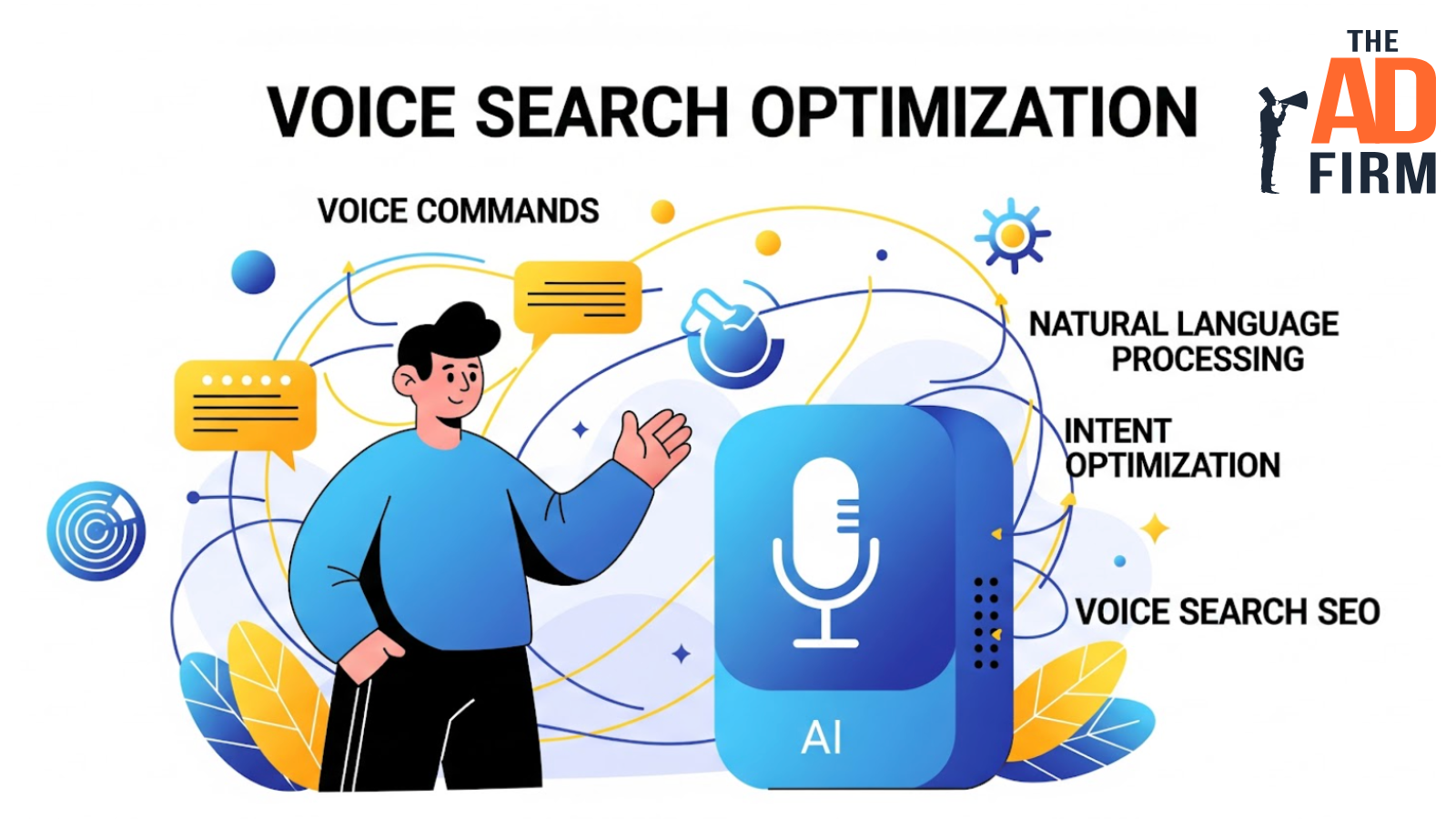Voice search isn’t fading, it’s evolving rapidly. As artificial intelligence reshapes how people ask and receive information, businesses must rethink their presence in search results. Google SGE (Search Generative Experience) is just one sign that search is moving toward more natural, spoken queries, and your content needs to keep up.
In this blog, we’ll break down what voice search looks like in 2025, why it still matters, and what to consider when building your SEO strategy.
Why Voice Search Still Matters (and How AI Has Changed It)
Voice search has grown far beyond the occasional “Hey Google” on your phone. Today, it’s embedded into how people interact with technology, from asking for directions in a car to ordering groceries through a smart speaker.
But the biggest shift isn’t just where voice search happens, it’s how Google understands those spoken queries. AI now plays a central role in interpreting voice intent, which affects what content is displayed.
- People now ask full, natural questions instead of short keywords: People no longer just say “weather,” they ask, “Will it rain in LA tomorrow morning?” This shift to natural, conversational language means search engines now process full sentences, not just terms. Content that mimics how people actually talk is more likely to be understood and surfaced. For SEO, this requires a more human tone throughout your content.
- AI models now interpret intent, not just words: Tools like BERT, MUM, and Gemini help Google understand the underlying reasons behind a question, not just the surface-level content. So if someone says, “I need a quiet coffee shop with Wi-Fi nearby,” AI deciphers that they’re looking for a peaceful environment, not just any café. This context-driven search means that your content must answer real-world questions with clarity and relevance.
- Voice is everywhere beyond smartphones: Voice search now happens in smart homes, cars, and wearable devices, not just on phones. These platforms rely on quick, concise, and relevant answers. If your content isn’t formatted for voice-friendly platforms, you risk missing out on a growing share of traffic that never sees traditional search results.
- Voice powers a large share of local and mobile searches: Many voice searches happen on the go, like asking, “Best pizza near me” while driving or walking. These hyper-local, intent-rich moments are precisely where local SEO services have the greatest impact. Without proper optimization, your business risks being invisible to users ready to take action. Let me know if you want a shorter or more conversational variation.
- People rely on voice assistants to help them decide what to buy, where to go, or which service to choose: Users trust voice responses when deciding what to buy, where to eat, or which service to call. If your brand doesn’t show up in these voice-curated results, your competitors will. It’s not just about being searchable, it’s about being the chosen answer.
- Voice content often feeds Google’s featured results: Many of the answers served in voice results come from featured snippets and AI-generated summaries. This means the stakes are higher; only one or two responses typically make the cut. If your content is voice-ready, it also boosts your chances of appearing in high-visibility spots like AI Overviews.
How to Optimize Your Content for Voice in 2025
Maximize Your Online Impact with The Ad Firm
- Local SEO: Capture the local market with strategic SEO techniques that drive foot traffic and online sales.
- Digital PR: Boost your brand’s image with strategic digital PR that connects and resonates with your audience.
- PPC: Implement targeted PPC campaigns that effectively convert interest into action.
Voice search optimization today is less about keyword stuffing and more about sounding like a real conversation. A forward-thinking digital marketing company focuses on strategies that align with how people actually speak and how AI understands intent.
Each of these tips is beginner-friendly, distinct, and built for practical results in an AI-driven landscape.
Use Natural, Conversational Language
Modern voice queries sound more like everyday conversations than search commands. If your content sounds too formal or robotic, it won’t match how people actually speak.
- Use everyday language that sounds natural and easy to follow: Use simple phrases and contractions, just like in natural speech. For example, “What’s the best pizza place nearby?” is better than “Locate top-rated pizzerias in proximity.”
- Break up complicated ideas into short sentences: Long, winding paragraphs can confuse both readers and voice assistants. Aim for clarity over cleverness; short sentences are easier for AI to parse and repeat.
- Use casual transitions to guide the flow: Phrases like “Here’s the deal” or “Let’s break it down,” mimic natural conversation and improve readability. This also keeps users more engaged as they listen to responses.
Focus on Long-Tail, Question-Based Keywords
When people use voice search, they ask full questions, not just keywords. Your content needs to reflect that shift to show up in those results.
- Include full questions in subheadings or text: Instead of just targeting “Thai restaurant,” go for “What’s the best Thai restaurant in downtown LA?” These long-tail formats align more closely with real voice queries.
- Consider how someone might naturally say the question aloud: Voice users don’t say “weather forecast LA”, they say “Will it rain in LA tomorrow?” Write your content with this human tone in mind.
- Use tools like AnswerThePublic or AlsoAsked.com: These tools help you find real-world phrasing from actual voice searches. They’re great for uncovering how your audience naturally asks questions.
Optimize for Featured Snippets and AI Overviews
Google pulls quick answers from trusted content, and voice assistants often read those responses word for word. An experienced SEO company will prioritize snippet-ready formatting to increase visibility in both search results and AI-driven summaries.
Transform Your Online Strategy with The Ad Firm
- SEO: Achieve top search rankings and outpace your competitors with our expert SEO techniques.
- Paid Ads: Leverage cutting-edge ad strategies to maximize return on investment and increase conversions.
- Digital PR: Manage your brand’s reputation and enhance public perception with our tailored digital PR services.
- Start answers with clear, direct summaries: Begin your paragraph with a one-sentence answer before expanding. This increases your chances of being selected as a featured snippet or AI summary.
- Use numbered or bulleted lists to break things down: Step-by-step formats help Google extract answers more efficiently. They’re also easier for users to hear and follow during voice playback.
- Keep your tone factual and unbiased. Avoid salesy or vague statements. Voice assistants prioritize neutral, trustworthy content that directly addresses the question asked.
Structure Content with Clear Headings and Lists
Voice AI relies heavily on clear heading structures to understand your content.
- Use descriptive headings (H2s, H3s) that answer real questions: For example, “How to Fix a Leaky Faucet” is more useful than “Plumbing Tips.” Headings should signal to both users and AI what’s coming.
- Break complex information into bullet points or steps: Long text blocks can’t be easily read aloud. Lists make it easier for voice assistants to retrieve the right answer from your page.
- Use a consistent format throughout the page: This helps Google index your content correctly. When every section follows a clear structure, voice AI can pull clean, coherent answers.
Don’t Skip Local Optimization
Many voice searches involve finding something “near me.” Without local signals, your site likely won’t show up in these high-intent queries.
- Claim and optimize your Google Business Profile. This is one of the top sources Google uses for local voice results. Include accurate hours, phone number, and business categories.
- Add location-specific keywords to your content. Mention neighborhoods, landmarks, or city names that your customers use. This helps match your site to the language of local voice queries.
- Ensure your site is mobile-friendly and loads quickly: Voice searches often happen on the go. A slow or clunky site can push you out of the running for featured answers.
Read also: Voice Search Optimization: A Top-to-Bottom Guide
Schema Markup Still Plays a Big Role in Voice Search
Voice assistants depend on structured data to deliver accurate answers; they don’t guess. Schema markup gives those clues. It’s a way of tagging your content so Google and voice AI can interpret it faster and more accurately.
Strengthen Your Online Authority with The Ad Firm
- SEO: Build a formidable online presence with SEO strategies designed for maximum impact.
- Web Design: Create a website that not only looks great but also performs well across all devices.
- Digital PR: Manage your online reputation and enhance visibility with strategic digital public relations.
- Schema helps Google “read” your content like a database: Instead of just scanning plain text, Google uses schema to understand the meaning behind your content. For example, it can tell that a page is a product review, a how-to guide, or a business location, not just a bunch of paragraphs.
- It improves your visibility in voice-triggered results: Pages with structured data are more likely to appear in rich results, like answer boxes or spoken replies from voice assistants. That’s because schema provides clarity about what your page is and what it offers.
- Specific types of schema help in different ways: FAQ schema makes it easier for your answers to be pulled directly by voice tools. LocalBusiness schema helps people nearby find your store. Product and HowTo schema give your listings a better chance of being selected when users ask for recommendations or step-by-step guides.
Read also: 5 Schema Markup for More Effective Local SEO Efforts
Common Challenges With Voice SEO in 2025
Voice search feels simple to users, but behind the scenes, it’s a high-stakes game. Businesses are often held back not by lack of effort, but by missing the shifts in how AI handles spoken queries. These challenges quietly undermine visibility, even for content that ranks well in traditional search.
- AI-generated results can replace the need to click through: Google’s latest features, like AI Overviews, often pull quick answers straight from top content, sometimes leaving the original site out of the equation. This means you’re not just competing with other websites, but with Google’s ability to summarize. If your content isn’t distinct and trusted, it may never reach the user.
- Pages with generic or vague topic coverage are deprioritized: Voice assistants aim to provide precise answers to specific questions. If your content tries to cover too much at once without a clear focus, it risks getting ignored. The lack of specificity makes it harder for AI to determine the page’s relevance to a spoken query.
- Inconsistent business details weaken trust signals: For service-based businesses, even minor mismatches in your name, address, or hours across platforms can confuse AI systems. This inconsistency lowers confidence in your site as a source for accurate voice responses. The more aligned your info is, the more likely you’ll be trusted.
- Slow-loading pages hurt voice response eligibility: Voice assistants prioritize speed, and a slow page often won’t be considered for voice results. Delays caused by unoptimized images, excessive scripts, or server issues can silently disqualify you. Users asking questions aloud expect instant answers, and so does AI.
Stay Ahead of Voice Trends with The Ad Firm
Voice search and AI are reshaping how customers discover businesses, and traditional SEO alone won’t cut it anymore. At The Ad Firm, we help brands build content strategies that speak the way real people do and are structured for how AI listens.
Advance Your Digital Reach with The Ad Firm
- Local SEO: Dominate your local market and attract more customers with targeted local SEO strategies.
- PPC: Use precise PPC management to draw high-quality traffic and boost your leads effectively.
- Content Marketing: Create and distribute valuable, relevant content that captivates your audience and builds authority.
From optimizing for long-tail voice queries to implementing schema that supports featured snippets and local voice results, our approach is built for today’s search landscape.
Ready to future-proof your rankings? Reach out to us and let’s create a voice-optimized SEO strategy that keeps you in front and heard.






